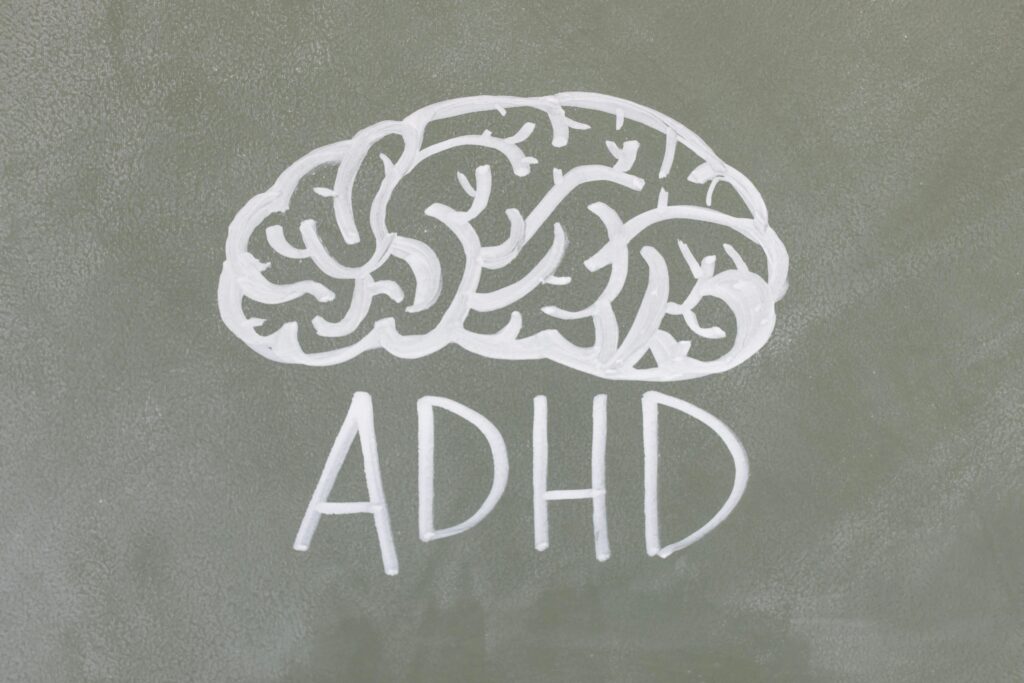If you’ve been on social media lately, chances are you’ve seen the term ADHD pop up in memes, reels, or even in casual conversations. It’s one of those buzzwords that gets thrown around a lot, “Oh, I can’t focus on this show, maybe I have ADHD” or “I just cleaned my whole apartment at 2 a.m., that’s my ADHD kicking in.”
But what does ADHD actually stand for? And more importantly, what does it mean in real life?
The Basics: Breaking Down ADHD

ADHD stands for Attention-Deficit/Hyperactivity Disorder.
That’s the official medical definition. But let’s make it simpler. ADHD isn’t about being “lazy” or “bad at paying attention.” It’s a neurodevelopmental condition: meaning it has to do with the way the brain grows and functions. Think of it like the brain’s operating system running a bit differently.
Instead of processing focus, impulse control, and energy in the “standard” way, someone with ADHD might experience:
- Difficulty with sustained attention (like sitting through a long meeting at work).
- Impulsivity (speaking out of turn, blurting things out, buying that thing on Amazon at 3 a.m.).
- Hyperactivity (restlessness, fidgeting, or constantly needing to move).
Now here’s the important part: ADHD doesn’t look the same in everyone. Some people are more distracted daydreamers, others are hyperactive doers, and many are a mix of both.
ADHD Is More Common Than You Think

In the United States alone, ADHD affects about 6 million children and roughly 4–5% of adults. That means you probably know someone – maybe even yourself – ho’s living with it.
The surprising part? Many adults don’t even realize they have ADHD until later in life. They just think they’re “scatterbrained,” “bad with deadlines,” or “always losing their keys.” But in reality, their brain just works differently.
More Than Just an Acronym

When people first hear “Attention-Deficit,” they imagine a person who simply can’t pay attention. But that’s not quite accurate. People with ADHD often pay too much attention, just not always to the “right” thing.
Example:
You might not be able to focus on filing your taxes, but you can spend six straight hours building a Spotify playlist or researching random facts about Yellowstone National Park. That’s not a lack of attention – it’s what many call hyperfocus.
So instead of thinking of ADHD as a deficit, it might be better to think of it as an attention difference.
Living With ADHD: A Daily Reality

Having ADHD doesn’t mean you’re broken. It means your brain has a different rhythm. Sure, there are challenges: deadlines, organization, remembering appointments (thank God for Google Calendar reminders).
But there are also strengths: creativity, out-of-the-box problem-solving, high energy, and the ability to make connections others might miss.
In fact, many entrepreneurs, artists, and innovators attribute some of their success to the way their ADHD brain works.
Why This Matters
Here’s the deal: ADHD isn’t just an acronym in a doctor’s manual. It’s a very real experience that affects millions of Americans every day. Understanding what it stands for, and what it really means – helps break the stigma.
It shifts the conversation from “That person is lazy or careless” to “That person’s brain works differently, and that’s okay.”
Closing Thought
So, the next time you hear ADHD, remember: it’s not just about being distracted or restless. It’s about a unique way of thinking and living in the world. And when we understand it better, we create space for compassion, patience, and even appreciation of those differences.
Because sometimes, the brains that don’t fit into society’s neat little boxes are the ones that change the world.
The Ayurveda Perspective on ADHD

While modern medicine looks at ADHD through brain chemistry, Ayurveda: India’s ancient system of holistic healing, views it through the lens of imbalance. In Ayurveda, the mind and body are deeply connected, and mental health challenges often reflect disruptions in our natural rhythm.
How Ayurveda Interprets ADHD
Ayurveda talks about three energies, or doshas: Vata, Pitta, and Kapha. Each governs different aspects of the body and mind. ADHD symptoms often align with an aggravated Vata dosha, which is linked to restlessness, scattered thoughts, anxiety, and difficulty focusing.
- Vata imbalance: Racing thoughts, impulsivity, forgetfulness.
- Pitta imbalance: Irritability, frustration, anger bursts.
- Kapha imbalance: Sluggishness, lack of motivation, mental fog.
Natural Approaches for Balance
Instead of just “treating” symptoms, Ayurveda focuses on restoring harmony in daily life:
- Herbal Support: Ashwagandha for calming the nervous system, Brahmi for focus and memory, and Gotu Kola for mental clarity.
- Diet: Warm, grounding foods (like oatmeal, soups, ghee) to calm an overactive Vata mind. Avoiding excess sugar and processed snacks that spike restlessness.
- Routine: Ayurveda emphasizes dinacharya (daily rhythm). Going to bed and waking up at consistent times, eating at regular hours, and practicing calming rituals like evening walks or meditation.
- Mind-Body Practices: Yoga, breathing exercises (pranayama), and meditation create stability and reduce impulsivity.
Why It Resonates With Americans Today

Interestingly, many of these Ayurvedic practices are already finding a home in the U.S.: yoga studios on every corner, turmeric lattes at coffee shops, and herbal supplements on shelves at Whole Foods. What Ayurveda adds is a structured philosophy to tie all these pieces together.
For someone living with ADHD, weaving Ayurveda into their lifestyle isn’t about replacing modern care. It’s about adding balance, using ancient wisdom to support focus, calm, and clarity in a world that often feels too fast and overwhelming.
“So, Ayurveda’s message for ADHD is simple: calm the storm inside by grounding the body, nourishing the mind, and respecting the rhythms of nature.”


